#2wd
Explore tagged Tumblr posts
Text

#animated gif#animated gifs#gif#gifs#old advertisements#old ads#retro#vhs#2wd#mitsubishi#eclipse#mitsubishi eclipse#sports car#desert#2 liter engine#4 valves per cylinder#90s
25 notes
·
View notes
Text
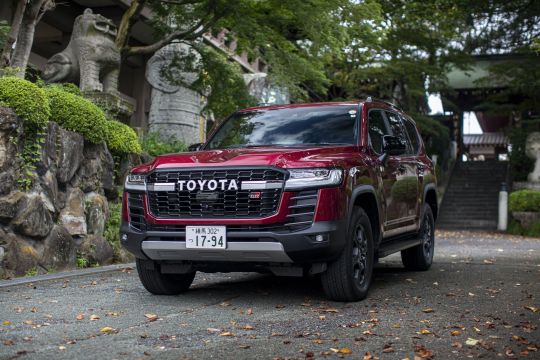
#cars#usedcars#carsforsale#vehicles#japanese#automobile#automotive#importers#exporters#newcars#suv#4wd#2wd#toyota#tanzania#africa#carjunction#discussion#forums
25 notes
·
View notes
Text


#gas#dailydriver#slammed77#adventure time#beach#water#trees#rock beach#out doors#out door#out side#2door#truck#gmc#gmc pickup#lowered#lowered canyon#2wd#Chrome wheels
2 notes
·
View notes
Text
youtube
#cars#usedcars#carsforsale#vehicles#japanese#automobile#automotive#importers#exporters#newcars#suv#4wd#2wd#toyota#reviews#georgetown#guyana#caribbean#carjunction#mitsubishi#trucks#Youtube
3 notes
·
View notes
Text
What Is the Difference Between AWD and 4WD?
When it comes to vehicle drivetrains, two terms often create confusion among drivers: All-Wheel Drive (AWD) and Four-Wheel Drive (4WD). Understanding what sets these systems apart is crucial for making informed decisions, especially when purchasing a vehicle suited for specific driving conditions. The difference between AWD and 4WD lies not just in their names but in their mechanical operations,…
#2WD#4WD#all-wheel drive#auto technology#automatic#AWD#car advice#Car Buying#car comparison#car facts#Car Features#car guide#car systems#Car technology#cars#center differential#drivetrain#driving conditions#driving dynamics#driving tips#everyday driving#Four-Wheel Drive#fuel efficiency#gear systems#Handling#Manual#off-road#off-roading#on-road#performance
1 note
·
View note
Text
Calliope Mini 3 Tutorial: Technik-Upgrade - Zwei Motoren separat steuern

Der Calliope Mini 3 verfügt über eine echte H-Brücke, mit welcher man zwei Motoren separat steuern kann. Dieses ist ein deutlicher Vorteil zur Vorgängerversion, denn dort konnte man die Motoren immer nur gleich laufen lassen. https://youtu.be/Gy6feiBBRls Im Beitrag DIY-Freude: 2WD Auto von Grund auf aufbauen habe ich dir erläutert, wie man ein 2WD aufbaut. Hier soll es nun darum gehen, wie du dieses mit dem Calliope Mini 3 steuern kannst.



Vorbereiten des 2WD Chassis für den Calliope Mini 3
Am 2WD Chassis findest du zwei DC-Motoren, an welche wir noch zwei Drähte anlöten müssen. Hier sind die Farben rot für Plus und schwarz für Minus im Vorteil. Da jedoch die Motoren je nach Polung der Spannung sich in unterschiedliche Richtungen drehen ist es zunächst eigentlich egal wo du welchen Draht anschließt.
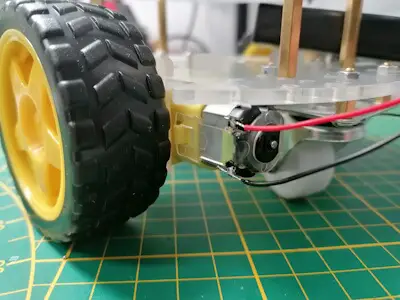
angelötete Litzen am DC-Motor
Anschlusspaneele für die Litzen

Anschlusspaneele für die Motoren und die Stromversorgung Von den beiden DC-Motoren und vom Batteriehalter kommen 6 Litzen insgesamt, diese müssen mit dem Calliope Mini verbunden werden. Dafür habe ich mir auf einer Lochrasterplatine 6 Schraubklemmen und ebenso drei 2er-Buchsenleisten aufgelötet und verbunden. Damit kann ich jetzt von diesen mit Breadboardkabel die Kontakte abgreifen und in die Buchsenleiste des Calliope Mini 3 stecken.
Montage des Calliope Mini auf der Acrylplatte
Mein 2WD Chassis hat zwei Acrylplatten, auf diese kann ich ganz einfach mit Kabelbinder diesen befestigen. Dazu stecke ich einen Kabelbinder durch einen Schlitz und schiebe auf diesen zwei weitere so das ich einen Abstand zwischen der Platte und dem Mikrocontroller erhalte.
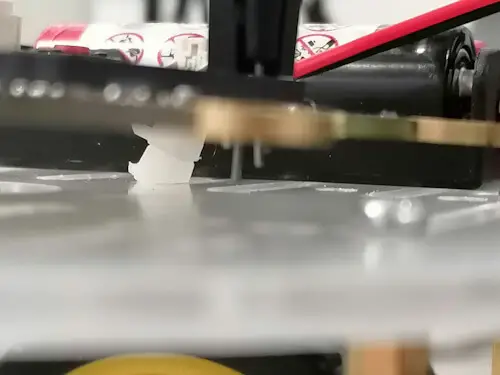
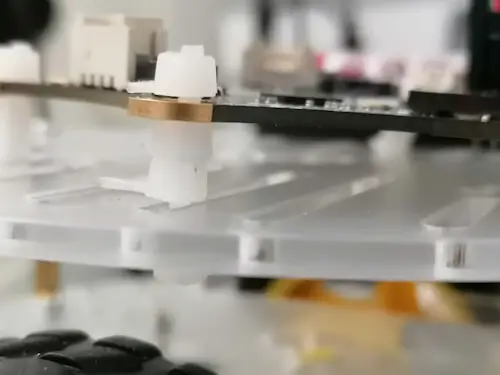
Diesen gewonnenen Abstand benötigen wir, damit die Breadboardkabel / Jumperkabel in die Buchsenleiste eingesteckt werden können.
Programmieren der DC-Motoren in MakeCode am Calliope Mini 3
Nachdem wir die Motoren an den Mikrocontroller angeschlossen haben, können wir diese in MakeCode programmieren und damit unser 2WD Chassis steuern. Dazu haben wir unter dem Menüpunkt "Motoren" einen Block über welchen wir den Motor 1 "M0" und Motor 2 "M1" vorwärts (positiver Zahlenwert) und rückwärts (negativer Zahlenwert) fahren lassen können.

Calliope Mini - MakeCode - Motor rückwärtsfahren

Calliope Mini - MakeCode - Motor vorwärtsfahren Wie erwähnt können wir am neuen Calliope Mini 3 die Motoren separat in eine Richtung steuern und können somit engere Kreise ziehen, da wir einen Motor vorwärts und den anderen parallel dazu rückwärts laufen lassen können. Calliope Mini 3 auf 2WD Chassis In dem Video läuft ein kleines einfaches Programm, welches immer abwechselnd den linken & rechten Motor auf positiv 61 % laufen lässt und den anderen dann auf negativen 61 %.
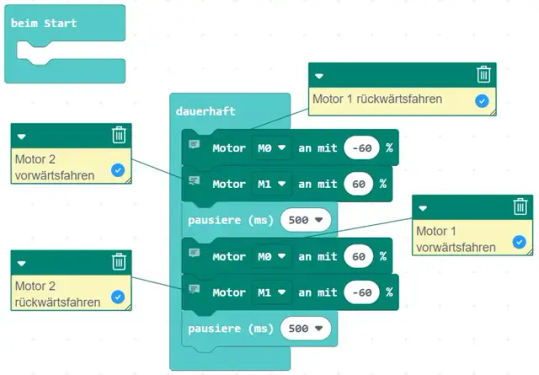
Programm zum steuern von DC-Motoren am Calliope Mini 3 Programm - Calliope Mini 3 - DC-Motoren steuernHerunterladen
Fazit & Ausblick
Um nun das kleine 2WD Auto autonom fahren zu lassen, bedarf es noch an einigen Sensoren wie Ultraschallsensor oder für die Linienverfolgung eines Helligkeitssensors. Wie du diese programmierst, zeige ich dir jedoch in separaten Beiträgen auf diesem Blog. Read the full article
0 notes
Text
For more collections, visit CarJunction.gy










1930 Bentley Speed Six Continuation Series prototype
#cars#usedcars#carsforsale#vehicles#japanese#automobile#automotive#importers#exporters#newcars#suv#4wd#2wd#toyota#reviews#georgetown#guyana#caribbean#carjunction
424 notes
·
View notes
Text





Nissan Vanette 2WD High Roof 8Ride SGL Excel, 1988. An eight-seat version of the C22 series second generation of the cab-over van. It was powered by a 2.0 litre petrol Z20S engine mounted under the floor between the front seats, driving the rear wheels. The top-of-the-range SGL Excel also featured a cool box in the centre console.
#Nissan#Nissan Vanette#Nissan Vanette C22#Nissan Vanette 2WD High Roof 8Ride SGL Excel#1988#8 seater#cab over#forward control#mid-engine#minivan#3 row
173 notes
·
View notes
Text
When I do buy a classic truck I’m gonna need some volunteers to lowball the guy so hard he takes my lowball offer. We are going to psyop a boomer
#they’ll list a pretty clean truck but if there’s any real niceness to it they want double what it’s actually worth#it’ll be a 2wd long bed#with a straight six and a three speed#brown on brown with red interior#the reason it’s clean is because nobody wanted it#but boomer Jim saw a restomod 4x4 go for 40k on M’cum or Barrett Jackson#so his garbage must be worth 25 THOUSAND DOLLARS
2 notes
·
View notes
Text
Overheard at the Home Depot: “You don’t need four wheel drive. You don’t do anything that requires it. Until something happens that you do need it. Four wheel drive is like a handgun. You don’t need it until you need it. And then it might save your life.”
#NRA life member patch on his jacket#seriously I’m in the Home Depot parking lot rn#very happy with my 2WD wagon
2 notes
·
View notes
Text



#cars#usedcars#carsforsale#vehicles#japanese#automobile#automotive#importers#exporters#newcars#suv#4wd#2wd#toyota#tanzania#africa#carjunction#vw#volkswagen#vw tiguan#dar es salaam
3 notes
·
View notes
Text
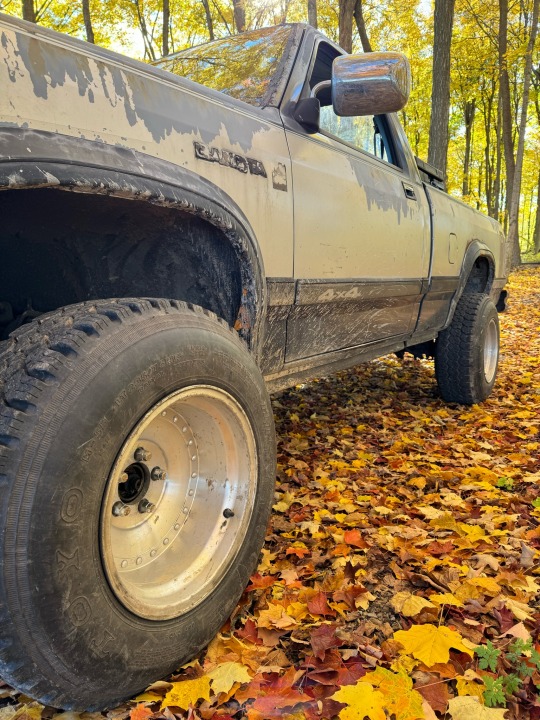
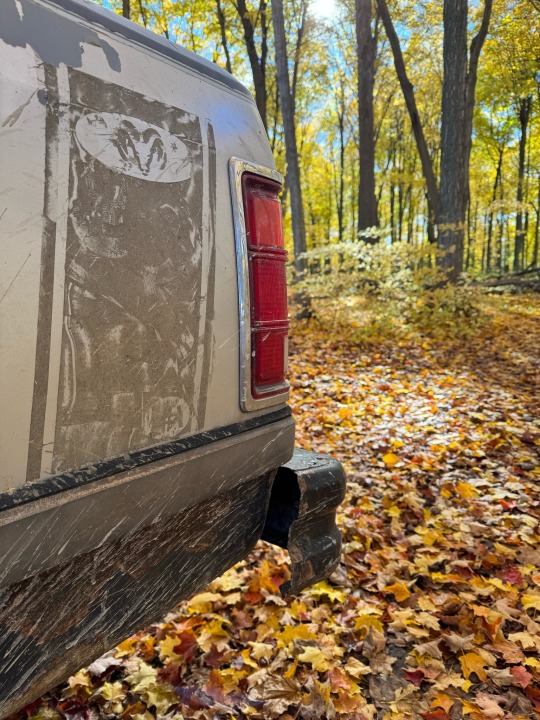
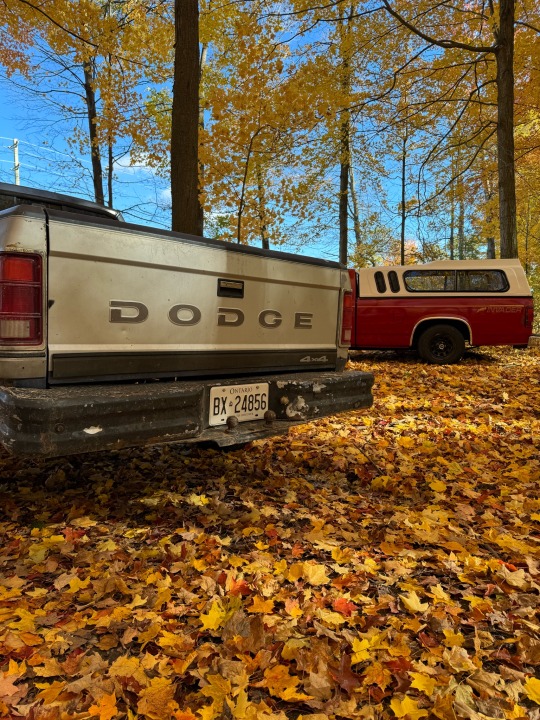
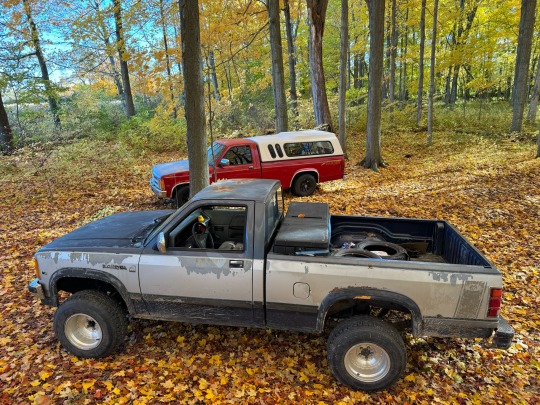
#gas#dailydriver#just kidding garage#trees#dodge dakota#dodge trucks#dodge#stick#2wd#4x4 truck#mini trucks#mini truckers#mini truck#fall#fallen leaves#fall aesthetic
5 notes
·
View notes
Text
#cars#usedcars#carsforsale#vehicles#japanese#automobile#automotive#importers#exporters#newcars#suv#4wd#2wd#toyota#reviews#georgetown#guyana#caribbean#carjunction
6 notes
·
View notes
Text
Global 2Wd Side Side Vehicle Market Overview and Strategic Insights 2024 - 2032
The global 2WD side-by-side vehicle market has been experiencing significant growth in recent years, driven by increasing demand for recreational vehicles, agricultural applications, and various off-road activities. This article delves into the market dynamics, key trends, competitive landscape, and future outlook.

Introduction
The global 2WD side-by-side vehicle market is poised for robust growth, driven by increasing recreational activities, agricultural needs, and urban development.
Side-by-side vehicles (SxS), also known as utility task vehicles (UTVs), are versatile vehicles designed for off-road use. They feature two side-by-side seats and are powered by either a 2WD (two-wheel drive) or 4WD (four-wheel drive) system. This article will focus specifically on the 2WD segment, which offers a unique blend of affordability, efficiency, and functionality.
Key Market Drivers
Rising Popularity of Off-Road Recreational Activities
The increasing number of enthusiasts participating in off-road sports and activities has significantly boosted the demand for 2WD side-by-side vehicles. Events and trails dedicated to SxS riding are becoming more prevalent, attracting a larger audience.
Agricultural Applications
In agriculture, 2WD side-by-side vehicles serve as practical tools for tasks like transporting goods, navigating through fields, and performing light-duty farming operations. Their efficiency and lower operating costs make them attractive to farmers.
Urbanization and Infrastructure Development
With rapid urbanization and development in rural areas, there is a rising need for versatile vehicles that can navigate both urban environments and rugged terrains. This dual functionality further enhances the appeal of 2WD SxS vehicles.
Market Challenges
Safety Concerns
Despite their popularity, safety concerns associated with 2WD side-by-side vehicles remain a challenge. Manufacturers and regulatory bodies are working to enhance safety features and promote responsible usage to mitigate risks.
Competition from 4WD Vehicles
The presence of advanced 4WD vehicles in the market poses a competitive challenge. While 2WD models are more economical, some consumers may prefer the enhanced capabilities and traction offered by 4WD options.
Competitive Landscape
Key Players
The 2WD side-by-side vehicle market is characterized by a mix of established brands and emerging players. Key companies include:
Polaris Industries
Can-Am (BRP)
Yamaha Motor Corporation
Honda Motor Co. Ltd.
Kawasaki Heavy Industries
These manufacturers are focused on product innovation, enhancing vehicle features, and expanding their distribution networks.
Market Strategies
To gain a competitive edge, companies are adopting various strategies, including:
Product Diversification: Introducing new models with improved features and performance.
Sustainability Initiatives: Developing electric or hybrid models to meet evolving consumer preferences.
Strategic Partnerships: Collaborating with dealerships and service providers to enhance customer experience.
Regional Analysis
North America
North America holds a significant share of the global 2WD side-by-side vehicle market, driven by a robust outdoor recreational culture and a strong agricultural sector. The U.S. is the largest market, with a high demand for both recreational and utility models.
Europe
In Europe, the market is witnessing steady growth, fueled by an increasing interest in outdoor activities and adventure sports. Countries like Germany, France, and the UK are key contributors to market expansion.
Asia-Pacific
The Asia-Pacific region is emerging as a promising market for 2WD side-by-side vehicles, driven by rising disposable incomes and growing interest in recreational activities. The agricultural sector's modernization in countries like India and China is also boosting demand.
Future Outlook
The global 2WD side-by-side vehicle market is expected to continue its upward trajectory, with advancements in technology and a growing focus on sustainability shaping the future landscape. Electric 2WD models and smart features like GPS navigation and connectivity are likely to gain traction.
Conclusion
The global 2WD side-by-side vehicle market is poised for robust growth, driven by increasing recreational activities, agricultural needs, and urban development. While challenges such as safety concerns and competition from 4WD vehicles exist, the market's potential for innovation and expansion remains promising. As manufacturers continue to evolve their offerings, consumers can look forward to a diverse range of vehicles that meet their unique needs and preferences.
#Global 2Wd Side Side Vehicle Market Size#Global 2Wd Side Side Vehicle Market Trend#Global 2Wd Side Side Vehicle Market Growth
0 notes
Text
Case Farmall 65C in good condition. Year 2018 build, registered (January) 2019, 2844 hours, 2WD, 65HP engine, 30kph 12×12 powershuttle transmission, manual linkage, two manual spools, pick up hitch, air con, air seat, radio, tidy tractor.
0 notes